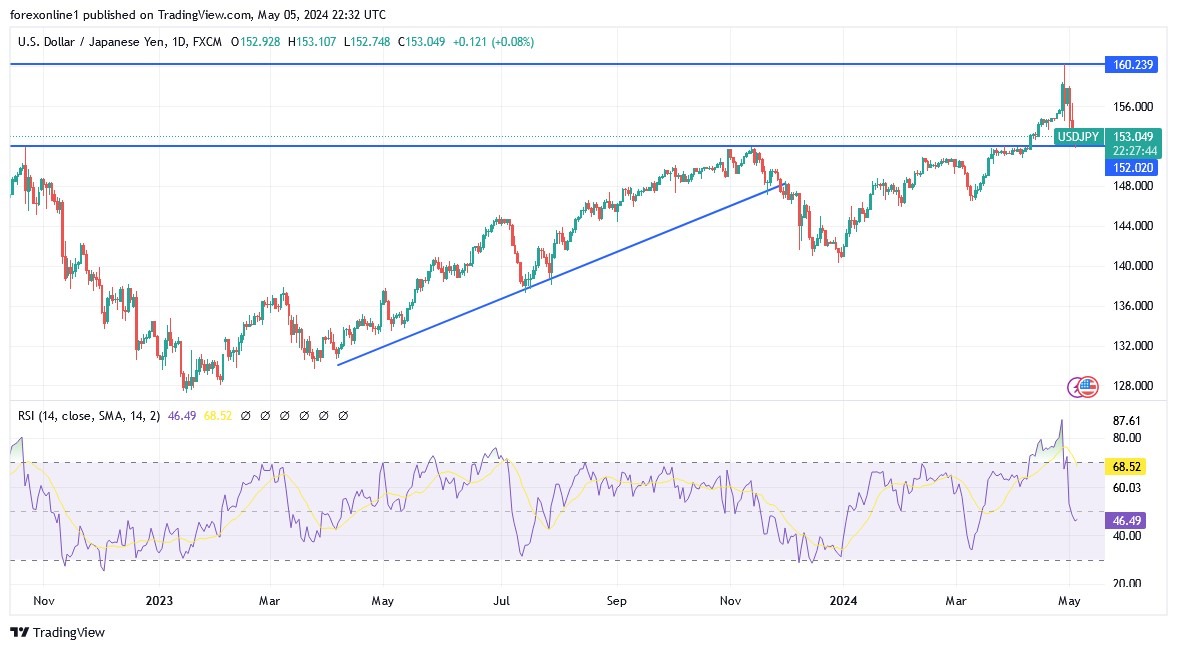- The Japanese yen was in the spotlight last week as concerns about its future continued.
- According to forex trading platforms, the USD/JPY currency pair initially rose to a high above resistance at 160.17 last Monday before quickly retreating to 152.93 as the Bank of Japan pumped in over $33 billion to stem the collapse.
As a result, the Japanese yen was the worst-performing currency in the developed world, collapsing by over 53% from its March 2020 peak. Looking back, the pair has fallen by over 105% since November 2011. From the same perspective, the Turkish lira has become almost worthless, becoming one of the worst-performing currencies in emerging markets. Almost, as it became one of the worst performing currencies in emerging markets. It has collapsed more than 2,200% from its 2011 high.
As such, there are concerns about whether the Japanese yen will continue to collapse like the Turkish lira. To understand this, we must explain why the Japanese yen has collapsed so severely in the past few years. First, Japan is one of the world's largest importers because it does not have many natural resources. Accordingly, Sogoshōsha companies, such as Marubeni, Mitsubishi, and Itochu, took advantage of this trend by obtaining natural resources and shipping them to Japan. As a result, the decline of the Japanese yen sparked inflation in the country. The results of the economic calendar data showed that the headline inflation rate rose to more than 2% in March. Although this is a low number compared to other countries, it is a large number for a country that is not accustomed to price changes.
Also, Japan is seeing wages rise for the first time in years. In March, the country's largest union approved the biggest wage growth in 33 years.
The Bank of Japan has been reluctant to raise interest rates. In other countries, rising inflation is usually met with rising interest rates. In the United States and other European countries, interest rates have jumped to their highest levels in over two decades. On the other hand, the Bank of Japan has been reluctant to raise interest rates. In fact, it made headlines when it raised rates by 10 basis points in March after exiting the negative interest rate scenario.
At the same time, the Bank of Japan fears raising interest rates because this will push the country's debt repayment costs to rise sharply. This is because Japan is one of the most indebted countries in the world with a total public debt of more than $9.2 trillion. Obviously, this is a large number considering that its economy has a GDP of $4.2 trillion and is not growing. Moreover, the Bank of Japan itself has assets worth more than $8 trillion.
As such, a small increase in interest rates will lead to more debt repayments and budget deficits. Fitch estimates that Japan's deficit will widen to 4.9% of GDP in 2023. Consequently, Japan will find it difficult to get out of the current hole, given that it is also undergoing severe demographic changes with a decline in its population. Accordingly, the moral of all this is that the Japanese yen will continue to fall against the US dollar. As I warned before, any interventions will be short-term, as we saw in 2022. Besides, there are signs that the Federal Reserve will not cut US interest rates this year.
Therefore, amid these challenges, there are questions about whether the Japanese yen will become the next Turkish lira. The two currencies have been in a sharp downtrend for a long time. As with the Japanese yen, the Turkish lira collapsed due to the actions of the Central Bank of the Republic of Turkey (CBRT), which adopted an unconventional monetary policy. For a long time, the bank has always tended to cut interest rates even when inflation jumps.
The point of all this is that most people and companies have lost confidence in the Turkish lira. Correspondingly, they avoided buying the currency even after the Turkish Central Bank raised interest rates to 50%. Therefore, it is still too early to predict whether the collapsed Japanese yen sell-off will continue in the long term. Respectively, we tend to believe that will happen. Japan's only hope is to have huge foreign exchange reserves. Japan holds about $1.15 trillion in US debt, which it can use to bail out the yen.
The other short-term hope for the Bank of Japan is a sharp decline in inflation, which would lead to a cut in interest rates by the Federal Reserve. Such a move would narrow the gap in carry trade between the US dollar and the Japanese yen.
Top Forex Brokers
USD/JPY Technical Analysis and Expectations Today:
The price of the US dollar against the Japanese yen “USD/JPY” has now declined, trading several levels below the 100-hour moving average line. As a result, the currency pair is about to fall to the oversold levels of the 14-hour RSI. In the near term.
According to the performance on the hourly chart, it appears that the USD/JPY currency pair is trading within a sharp bearish channel. Also, the 14-hour RSI appears to be supporting the downside as it approaches oversold levels. Therefore, the bears will target extended declines at around 151.88 or lower at the 151.14 support. On the other hand, the bulls will target bounce profits at around 153.19 or higher at the 153.73 resistance.
In the long term, and according to the performance on the daily chart, the USD/JPY currency pair is trading within an ascending channel. However, the 14-day RSI has recently pulled back to recover from overbought levels. Therefore, the bears will target extended pullbacks at around 146.64 or lower at the 140.67 support. On the other hand, the bulls will be looking to pounce on profits at around 156.16 or higher at the 160.36 resistance.
Ready to trade our daily Forex forecast? Here’s a list of some of the best regulated forex brokers to check out.

